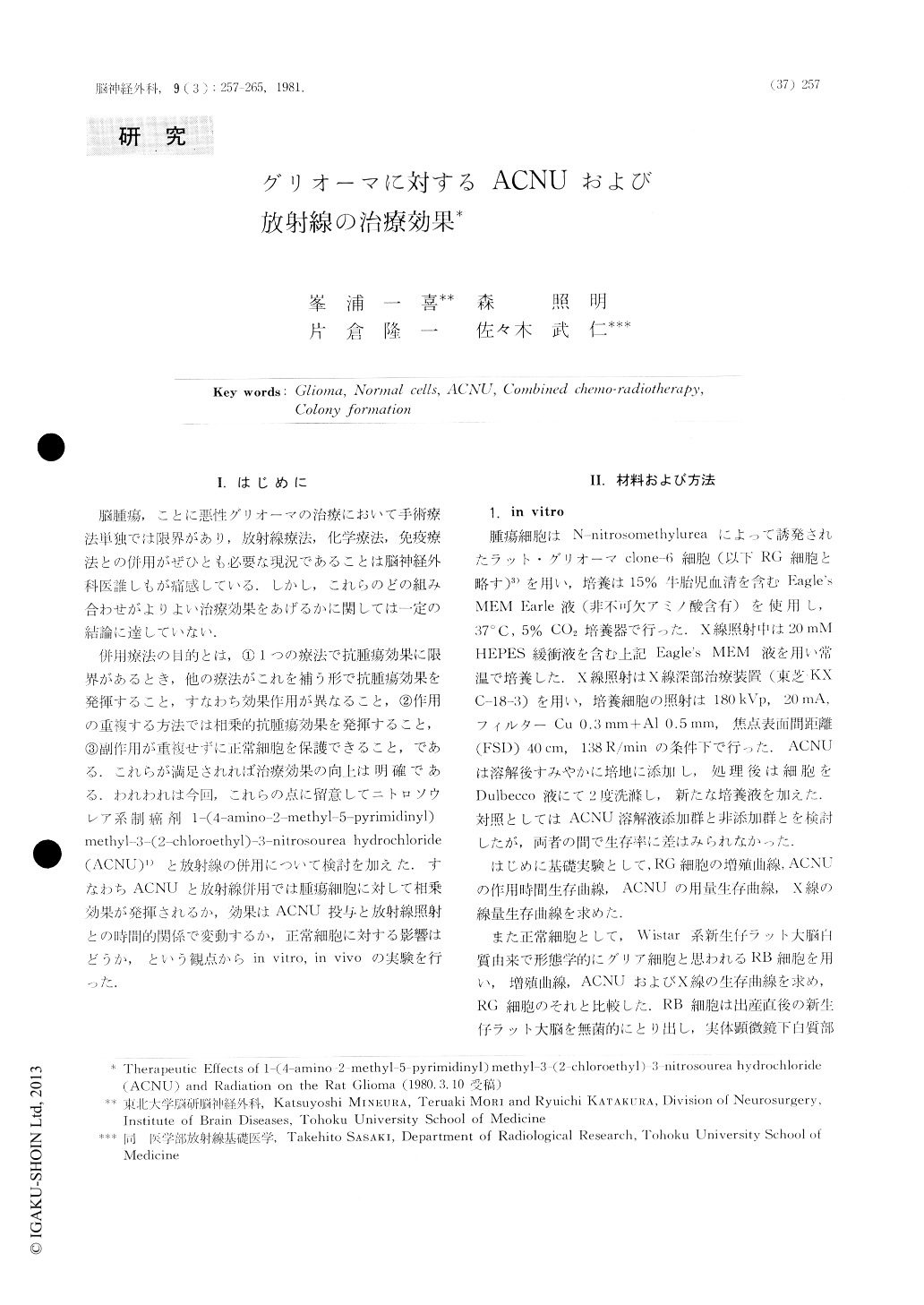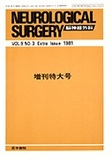Japanese
English
- 有料閲覧
- Abstract 文献概要
- 1ページ目 Look Inside
I.はじめに
脳腫瘍,ことに悪性グリオーマの治療において手術療法単独では限界があり,放射線療法,化学療法,免疫療法との併用がぜひとも必要な現況であることは脳神経外科医誰しもが痛感している.しかし,これらのどの組み合わせがよりよい治療効果をあげるかに関しては一定の結論に達していない.
併用療法の目的とは,①1つの療法で抗腫瘍効果に限界があるとき,他の療法がこれを補う形で抗腫瘍効果を発揮すること,すなわち効果作用が異なること,②作用の重複する方法では相乗的抗腫瘍効果を発揮すること,③副作用が重複せずに正常細胞を保護できること,である.これらが満足されれば治療効果の向上は明確である.われわれは今回,これらの点に留意してニトロソウレア系制癌剤1-(4-amino-2-methyl-5-pyrimidinyl)methyl-3-(2-chloroethyl)-3-nitrosourea hydrochloride(ACNU)1)と放射線の併用について検討を加えた.すなわちACNUと放射線併用では腫瘍細胞に対して相乗効果が発揮されるか,効果はACNU投与と放射線照射との時間的関係で変動するか,正常細胞に対する影響はどうか,という観点からin vitro, in vivoの実験を行った.
The effect of ACNU or x-radiation on the reproductive integrity of the rat glioma clone-6 cells (RG cells) was analyzed by the colony formation assay in vitro. The surviving fraction of RG cells decreased exponentially according to time after addition of ACNU 100μg/ml to culture medium, but the decrease was biphasic with a break point about 90min. The time at a surviving fraction of 50%, was about 15 minutes.
The dose-survival curve for ACNU (120min. exposure) showed the existence of a shoulder, indicating repair capacity from sublethal damage, at 0-25μg/ml.

Copyright © 1981, Igaku-Shoin Ltd. All rights reserved.


